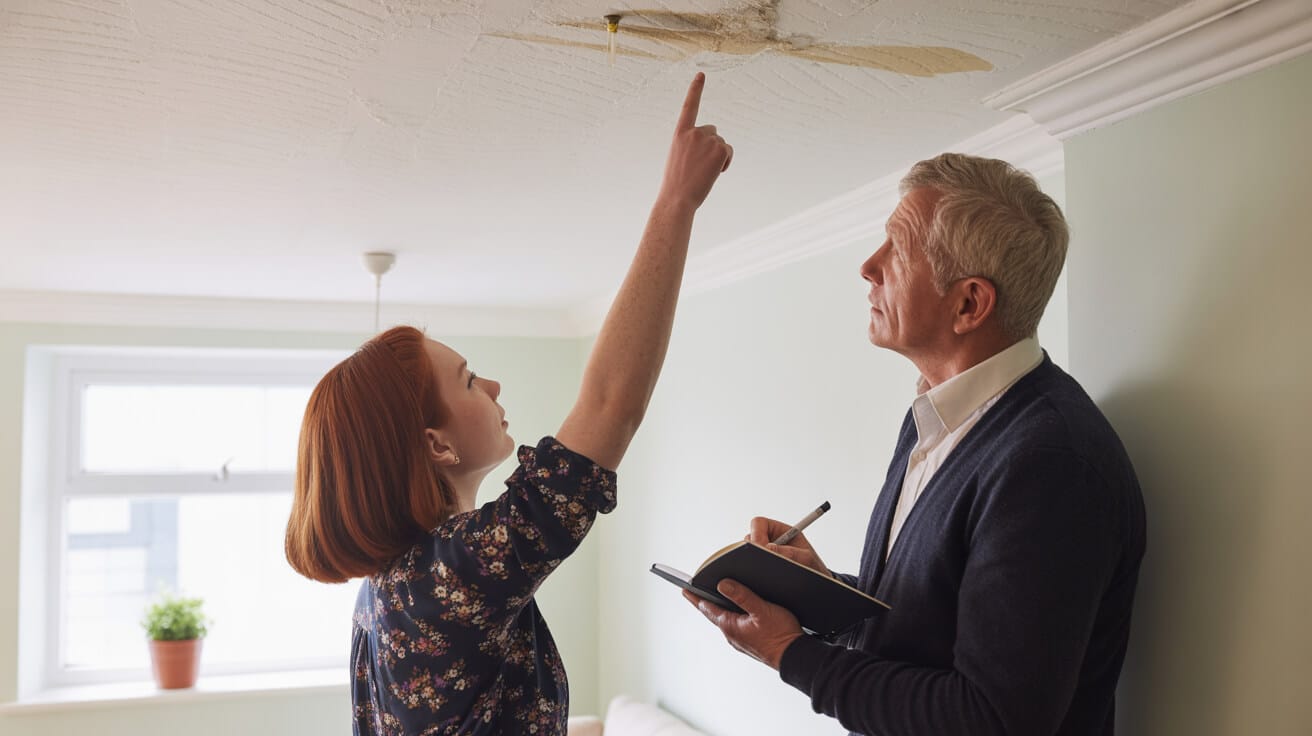 20 Common Bathroom Renovation Questions Answered
20 Common Bathroom Renovation Questions Answered
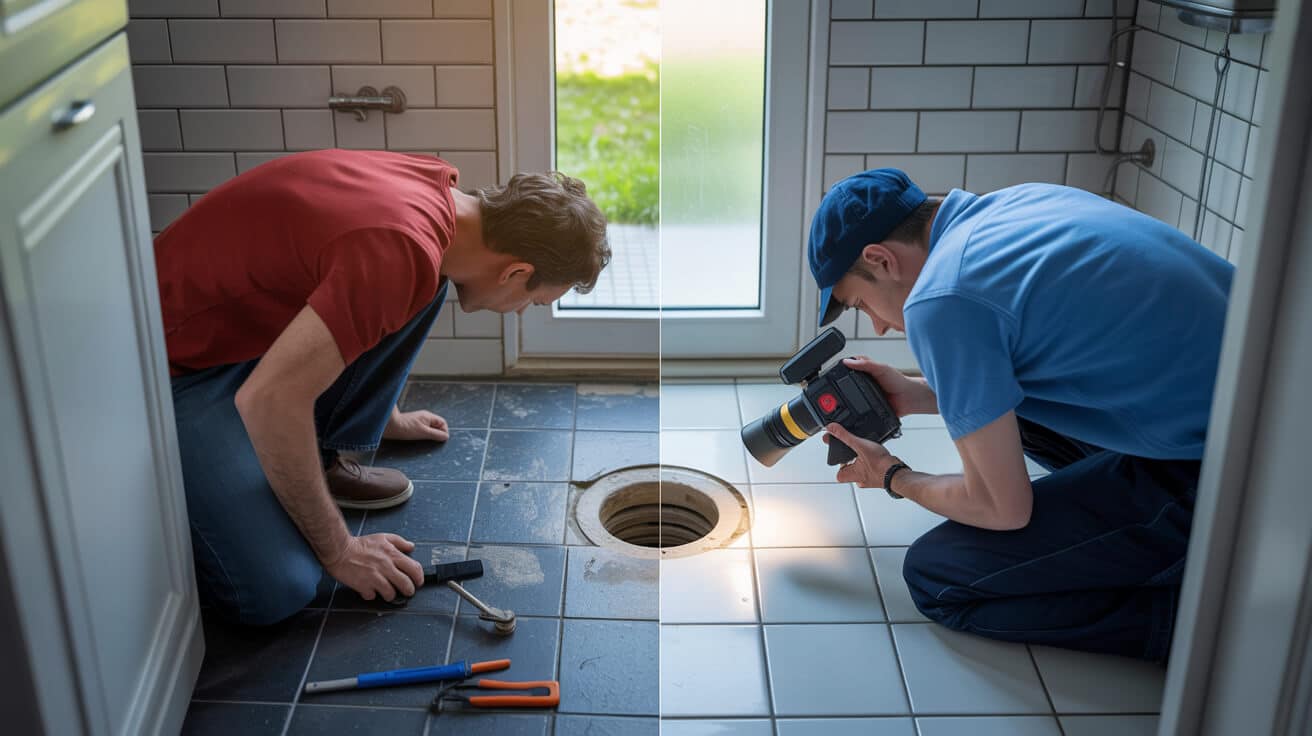
Is a UK Bathroom Renovation Just a Facelift—Or Does It Actually Protect Your Property?
A real bathroom renovation in the UK is never just a cosmetic patch-up—it’s a full systems upgrade that protects the long-term value, compliance, and peace of mind for your property. Underneath new tiles and taps lie countless risks: leaky old pipework, dodgy electrics, timber rot, and corners that only show themselves during a true strip-out. The best jobs reach below the surface, upgrade critical infrastructure, and sequence everything for genuine resilience against leaks, legal surprises, or hidden damage that could haunt you at sale or audit.
What’s hiding behind your tiles can decide whether your bathroom stays flawless—or quietly falls apart when it matters most.
Every reputable installer—like Plumbers 4U—starts with a detailed survey: checking for moisture, rotten joists, outdated wiring, and non-compliant fittings. WRAS, G3, and Part P protocols are central. Old supply lines must go, push-fit bodges are replaced, and electric points aren’t just “moved”—they’re certified for bathrooms. Each step is logged with photos and pressure tests, so any buyer, tenant, or insurer gets undeniable proof of what’s gone in.
What the Best Fitters Actually Do (And How Shortcuts Backfire)
1. Site Isolation & Protection
Before a tile comes off, engineers protect floors and fixtures and isolate water and electrics at the right points—so the rest of your house stays undisturbed.
2. Strip-Out & Survey
thermal imaging, moisture metres, and cable tracers expose deeper risks—rot, leaks, corroded copper, and ancient wiring are documented with photos, not just “noted in passing.”
3. Infrastructure Upgrades
- Plumbing: Every new run is WRAS-approved, pressure-tested, and insulated. Corroded pipes are replaced—not left to fail later.
- Electrics: Part P certified professionals instal and sign off all wet-zone circuits, shaver sockets, RCD-protected points, and extractor fans.
- Waterproofing: Wet zones are tanked below the surface—showers, trays, and wet rooms see ant-mould boarding and life-rated sealants.
- Building Regs: Waste falls, venting, and hot-water thermostatic blending are set to Part G/H, not just “best effort”.
4. Precision Fitting & Handover
Fixtures are secured to timber, not board, so they never work loose. Every point is pressure and performance tested—photos and certificates become your physical proof.
5. Post-Instal Inspection
After the fit, the installer walks you through isolation valves, RCD breakers, and maintenance. You’re handed a pack: all paperwork, test results, and compliance evidence—vital for lettings, sales, or insurance.
What’s at Stake with Shortcuts?
- A missed step now quietly risks long-term leaks, insurance denial, or compliance fines
- Untested pipework or missed tanking may only fail after you’ve moved back in or let the flat—triggering bigger damage (and cost) later
- Non-registered electrics lead to surveyor knockbacks, Part P notices, and urgent rework
- No paper trail? Buyers, insurers, and agents see “risk”—and you pay the price in value or hassle
When it’s your asset, your comfort, and your reputation at stake, shortcuts are a false economy. The best installers—like Plumbers 4U—give you only visible, tested, and futureproof solutions.
Why Does a True UK Bathroom Renovation Cost What It Does—and What Makes Prices Jump?
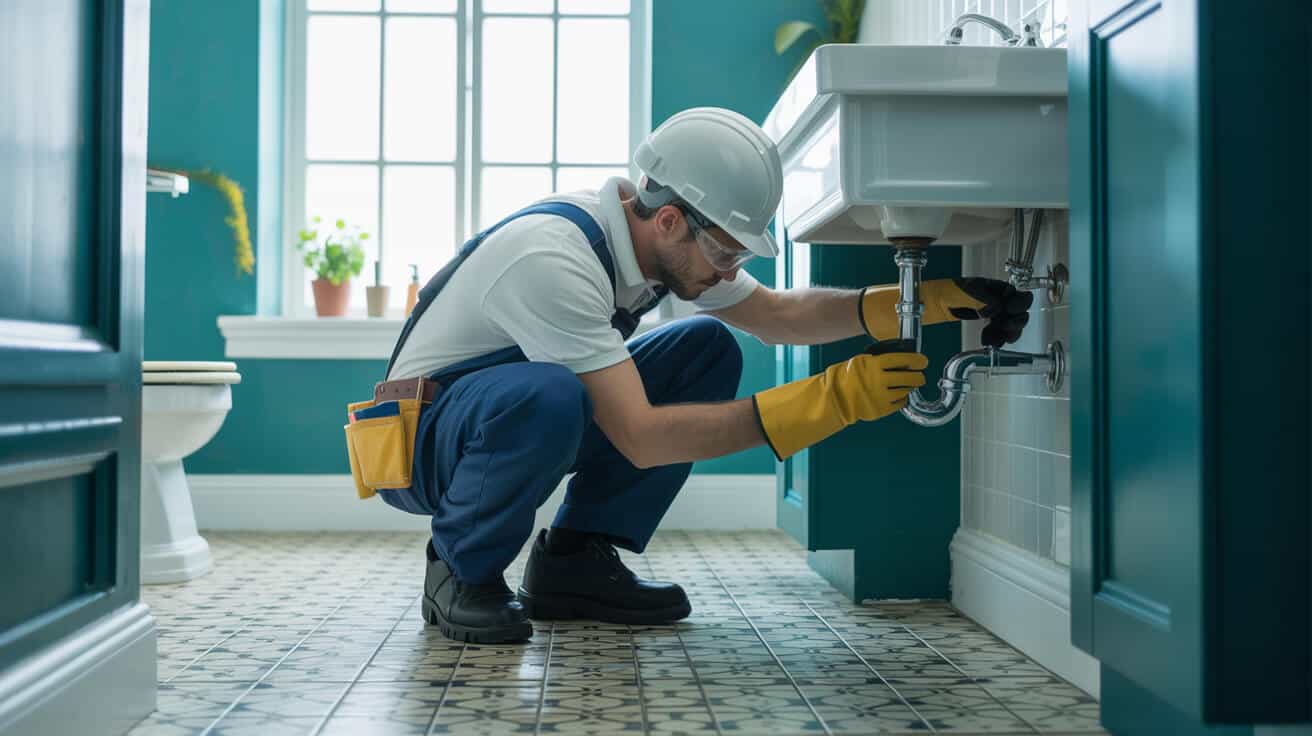
The real cost of a UK bathroom renovation isn’t about “suite included” or “vanity finish”—it’s the risk, labour, and unseen repairs uncovered once work begins. Most complete jobs start at £5,000–£10,000+, with prices shaped by legacy faults, scope creep, regulatory needs, and the quality level you demand.
Every hidden leak, rotten board, or non-compliant fitting has a price—and it shows up only when the job has started.
Here’s a real-world breakdown behind the final bill (for a three-piece domestic refit; add 20–40% for complex jobs or commercial premises):
| Area | Typical Cost | Included |
|---|---|---|
| Suite Fixtures | £700–£2,500 | Bath, basin, WC, taps, exposed valves |
| Multi-Trade Labour | £2,500–£4,500 | Survey, plumbing, electrics, tiling, finish |
| Tiling & Surfaces | £750–£2,500+ | Tanking, waterproof boarding, new tiles |
| Pipework/Drainage | £300–£2,000 | Rerouting wastes, supply upgrades |
| Electrics | £200–£800 | RCDs, new feeds, Part P instal & sign-off |
| Waste Disposal | £150–£500 | Skip or legal removal, recycling |
| VAT & Contingency | Variable | Margins, management, scope shifts |
Why Do Projects Cost More Than the Quote?
- Legacy Surprises: hidden leaks, rotten subfloors, and shortcut wiring burn time and materials—each demands repair before new works can stay safe and legal.
- Spec Upgrades: Designer tiles, digital thermostats, or bespoke glass add direct cost.
- Layout Changes: Moving a WC, wet room, or shower—new pipework, subfloor mods, and waste alignment drive complexity.
- Compliance Triggers: Installing unvented cylinders (G3), extending electrics (Part P), or rewiring mean you need certified, often pricier, trades.
- Access/Location Constraints: Busy flats, parking, or skip limitations can add day rates.
Smart firms like Plumbers 4U only quote in line items—transparent, photo-logged, and with risk allowances. Any extra cost is surfaced as soon as it’s found—not as a surprise at final invoice. You see, sign off, and stay in control.
Why Do Bathroom Renovations So Often Overrun—And What Sets Reliable Schedules Apart?

A professionally-run UK bathroom renovation is typically 7–12 working days for a domestic flat, stretching up for complex layouts or commercial jobs. The biggest cause of overrun? Not unreliable trades, but the hidden faults uncovered once the rip-out starts. Once pipework and wiring are exposed, only then do old leaks, rotting floors, or bodged fixes show up—and each needs correcting to meet spec.
A delay in the schedule almost always comes from what’s hidden—not the visible sequence on your quote.
Real World Timeline: No-Drama, No Panic
- Day 1–2: Site survey, protection, compliance check, and strip-out.
- Day 3–4: Legacy risk roller—moisture checks, subfloor repairs, exposure of every existing pipe, cable, and fitting.
- Day 5–7: first fix—plumbing and electrics routed, pressure-tested, compliance triggers sequenced for inspection.
- Day 8–10: Tiling, tanking, grouting, waterproofing.
- Day 11: second fix—fixtures, controls, final alignment.
- Day 12: Testing, documentation, and a full handover demo.
Biggest Delays—And How Good Installers Control Them
- *Rotten timber or hidden leaks* (repair before tiling)
- *Glitchy old wiring* (upgrade to Part P standard)
- *Slow bespoke materials*: Made-to-measure glass, luxury brassware can have long lead times
- *Unanticipated compliance audit*: When a structural or wiring change trips new Building Regulations or LABC notifications
The best contractors build in contingency. They photo-log every finding and let you approve the next fix before moving forward. Daily updates, interim sign-offs, and transparent milestone tracking keep things on time—even if the job changes mid-flight.
Do I Need Planning Permission—or Just Building Regs—for My Bathroom Remodel?
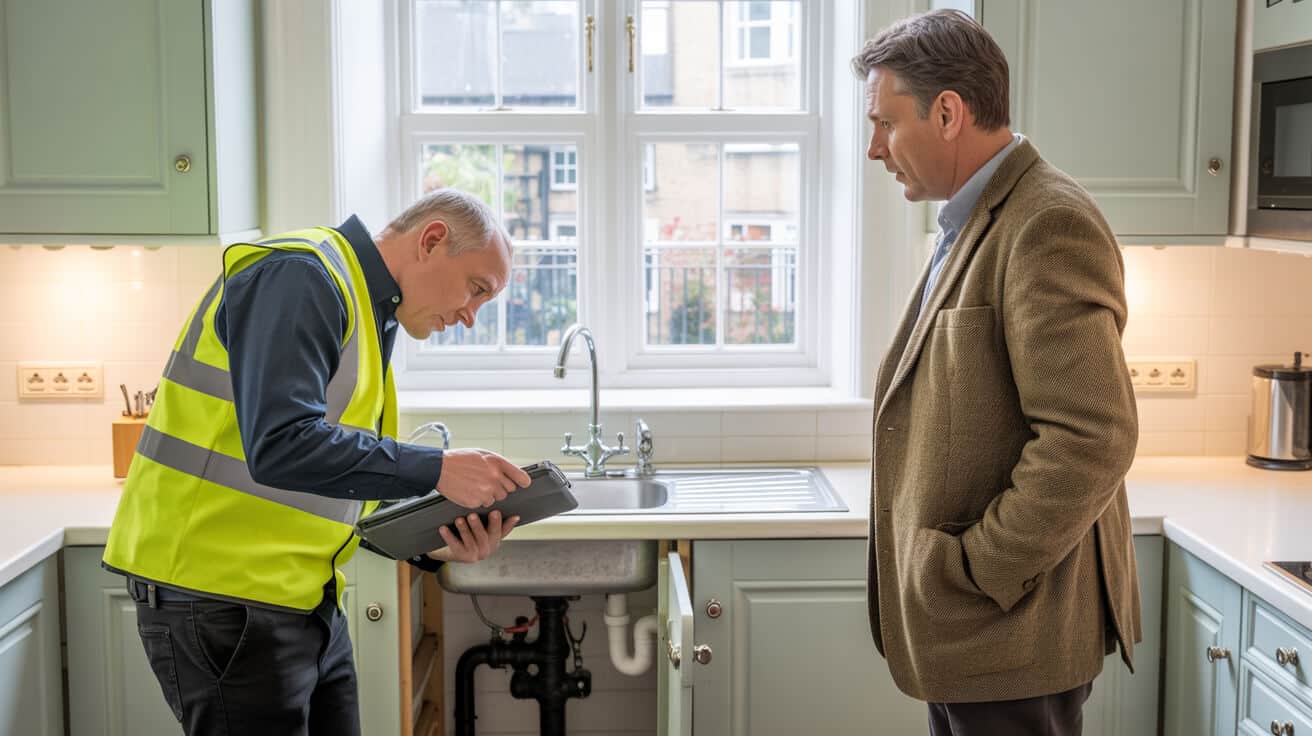
Most UK bathrooms need zero planning permission, unless you’re building out, adding windows, or materially changing a property’s use. But every legal bathroom renovation is covered by Building Regulations—designed to make sure what goes behind those walls stands up to scrutiny from day one to resale.
Most shortcuts are compliance risks in disguise—what you can’t see can cost you at your next sale or letting.
Key Regs That Apply:
- Part G: Scald-prevention and correct mixer thermos for every hot water outlet
- Part H: Waste pipes, venting, fall angles, and trap access for hygiene
- Part P: All electrics, from extractors to socket moves, *must* be installed and inspected by a Part P registered professional
- WRAS: Every visible or hidden plumbing fitting must be WRAS approved for hygienic supply
Special Cases Requiring Building Control/Sign-Off:
- Unvented/pressurised hot water (G3 sign-off only)
- Rerouted soil stacks or drainworks
- Conservation, listed properties, or convert-loft layouts
The best-informed installers manage this for you—notifications, inspector coordination, and compliance paperwork land in your hands at handover, not lost in an office. The result? Your bathroom is an asset, not a question mark, for surveyors, tenants, or buyers.
What Hidden Risks Threaten a Bathroom Renovation—And How Do Professionals Avoid Them?
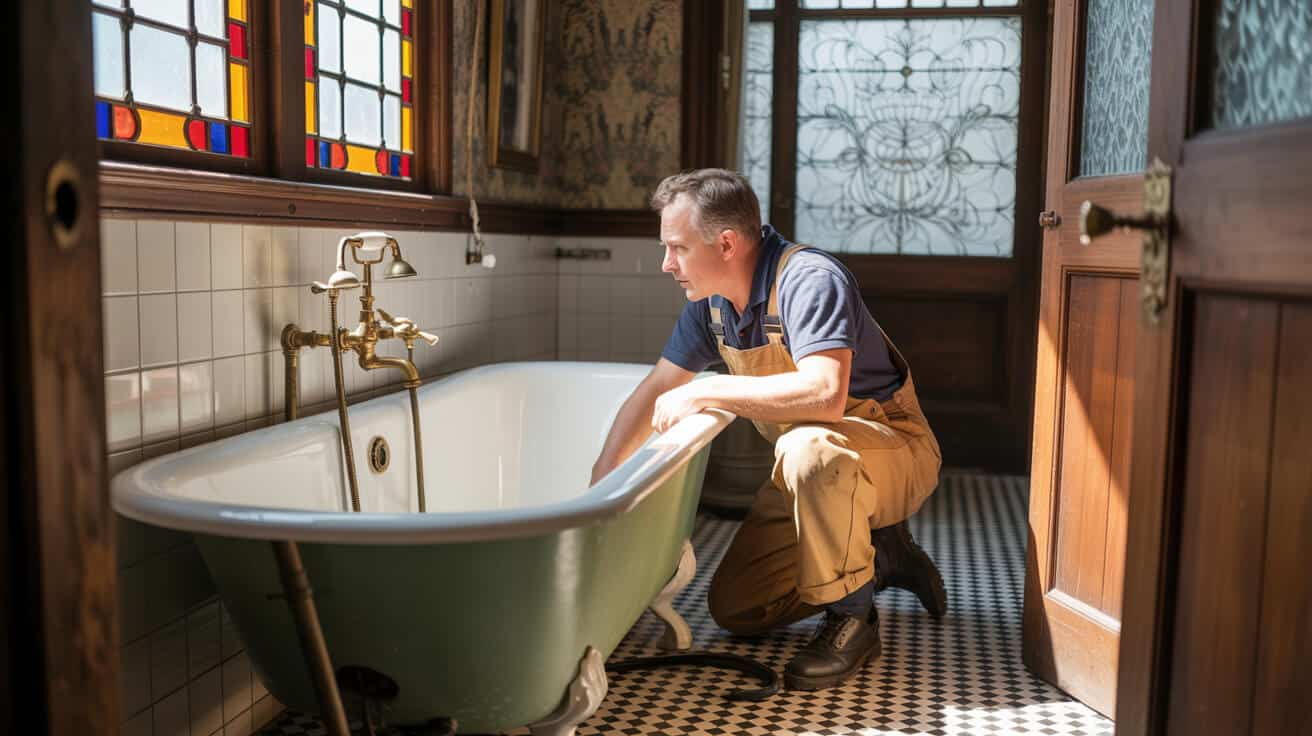
The gravest costs of a bathroom refit lie beneath the surface: leaks tucked behind boxing, rotten joists, storey-old wiring, or dodgy “twist and hope” connections that were covered up last time. These hidden failures hit your wallet later—blank cheques for insurers, health hazards, or a failed buyer survey when you upgrade or let.
Surface repairs never solve what’s hiding in the wall. Bulletproofing means stripping back, logging every risk, and fixing now—when it’s least disruptive.
How Proper Pros Locate—and Fix—What You’ll Never See
- Full strip-out and photo log: Not just swapping fixtures, but exposing every inch of pipework, wiring, and substrate—and giving you before/after evidence.
- Pre-replacement pressure and cable test: Faults are flagged before new works go in, so the fix is complete, not cosmetic.
- Compliance-verified upgrades: Every “invisible” part is WRAS or Part P certified; walkaway handover equals proof-of-standard.
- Asbestos check: On older floors or adhesives, a pro flags and refers before disturbing materials—avoiding direct and legal hazard.
- Transparent reporting: Every hidden join, replaced valve, or reinforced joist is logged and given to you in a pack for future agent, tenant, or buyer record.
Firms like Plumbers 4U flag the risk up front, itemise the cost, and sequence repairs so no surprise bill lands later, and your asset stays protected regardless of who inspects it next.
What Makes a Bathroom Installer Truly Trustworthy—And How Do You Check?
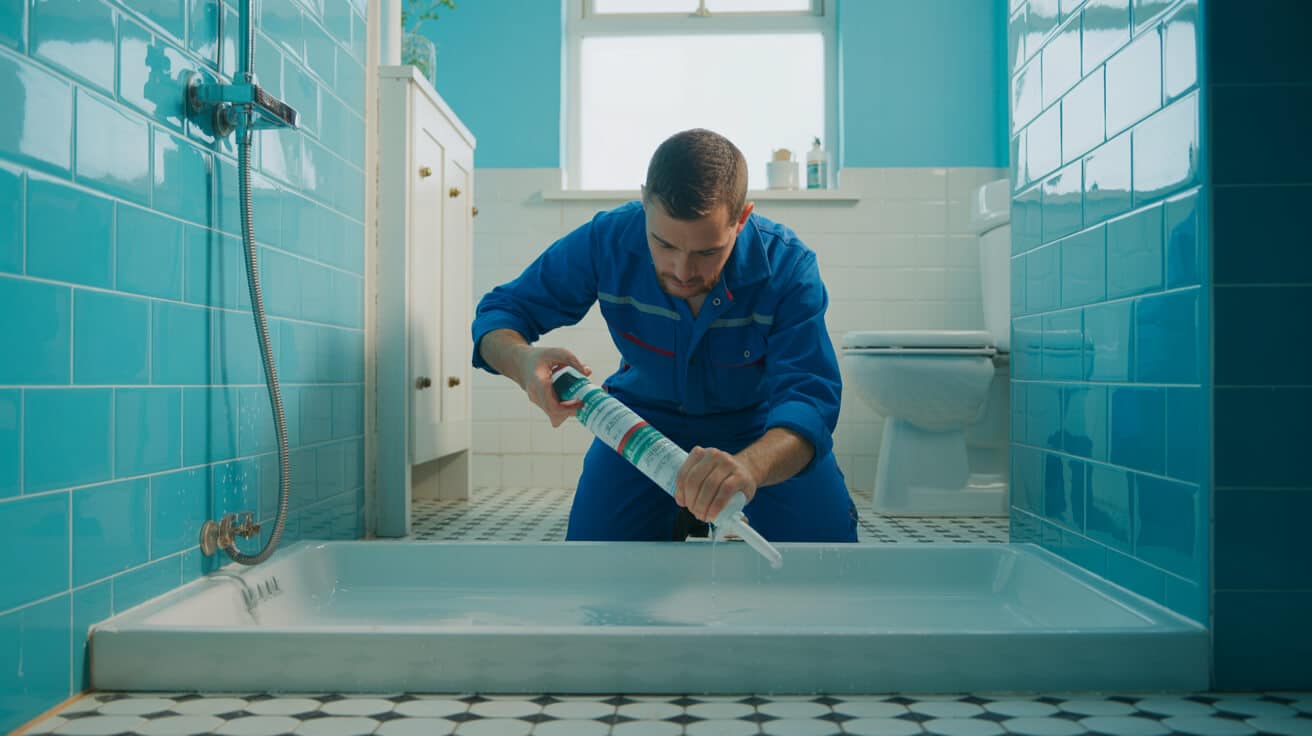
Reliability isn’t a vibe—it’s documentation, certification, and visibility, all the way from quote to clean-up. A legit UK bathroom installer will have more to show than just glowing words or handshake promises.
What To Demand:
- Credentials you can check: WRAS, G3, Part P, WaterSafe, and CSCS badges point to real training, not “trade” talk.
- Line-item, photo-backed quotes: So you understand every allowance, every risk, and what’s provisional before a spanner is lifted.
- Solid references and visual galleries: Trustpilot and Google reviews, before/after project files, and call-able client references speak for themselves.
- Full liability and warranty trace: Upfront about legal and product guarantees, plus a handover file with all relevant paperwork when the job is done.
- Completion file and walk-through: You’re walked through every new valve or controller; documentation—test logs, compliance, and asset IDs—are handed over.
In property, ‘show, don’t tell’ isn’t just creative advice. Installers who show proof are the only ones who save you from future headaches—no drama, no runaround.
Plumbers 4U deliver this as standard: every project logged, every system walked through, support always just a call away, and every penny traceable in writing.
Will a Proper Bathroom Renovation Require New Pipework or Drain Runs?
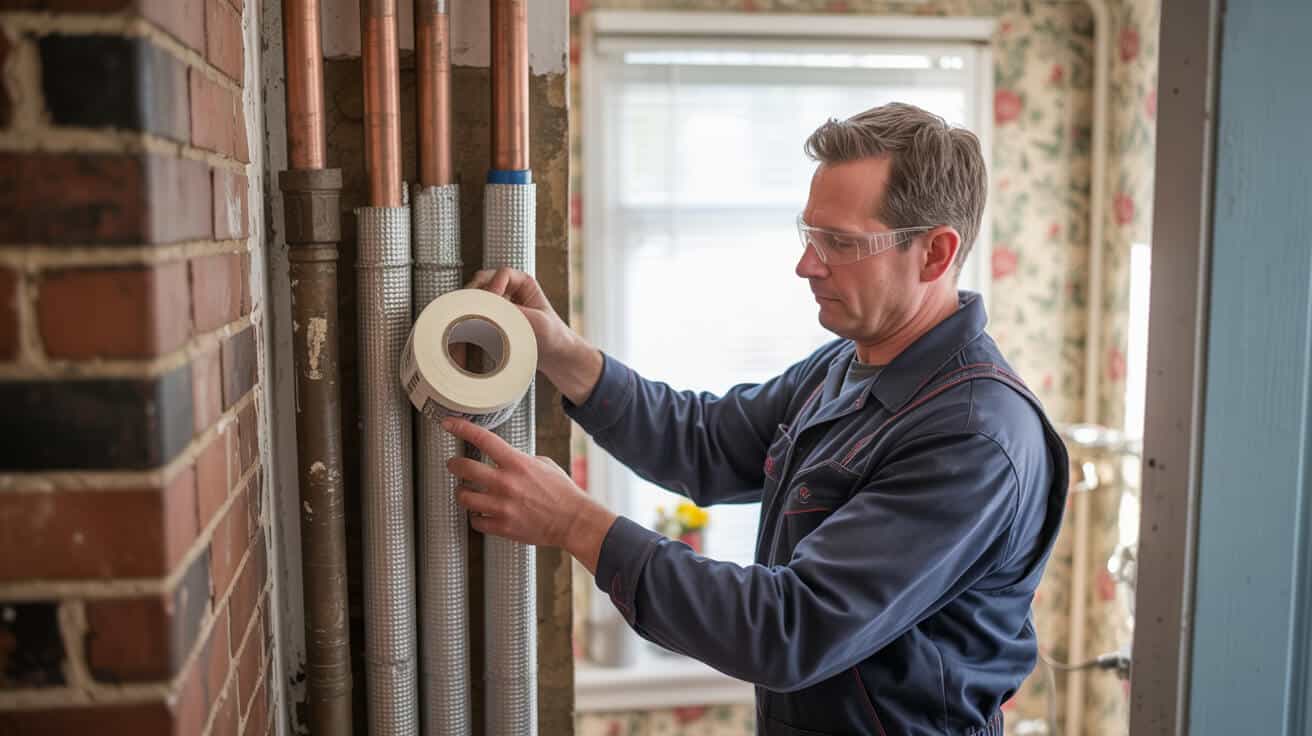
Unless you’re only swapping tile and surface hardware, expect new pipework as standard. Changes to fixture layout, discovery of corrosion or crumbling push-fits, or the appearance of green scale or “weep” at joints all justify fresh supply or drain runs. Risking old, unseen pipework is betting against your own future survey—and your budget.
Deciding When to Replace
- Moving WC, basin, or shower?: New falls and vented routes are needed to meet legal compliance and block future blockages.
- Legacy pipes cracked/corroded?: WRAS-approved copper or modern plastic is the only repair.
- Upgrading systems (luxury showers, big baths)?: Old 15mm or cramped waste will starve new features of pressure or cause future blockages.
- Legal demands: Part H mandates accessible, vented, and gradient-correct waste runs, plus visible isolation points for shut-off and maintenance.
- Compliance and service access: Insurance and buyers want to see new, logged pipes with documented pressure or flow—they don’t accept guesswork.
A quality installer—like Plumbers 4U—offers you a decision: pressure-test old runs, explain findings, and let you choose. Every upgrade is documented, photo-logged, and filed for you. No “guess and hope,” no repeat call-outs.
What’s not replaced now is often the most expensive fix five years down the line—especially when resale or insurance is at stake.
How Does a Top Renovation Guarantee Full Compliance, Legal Safety, and Future Proofing?
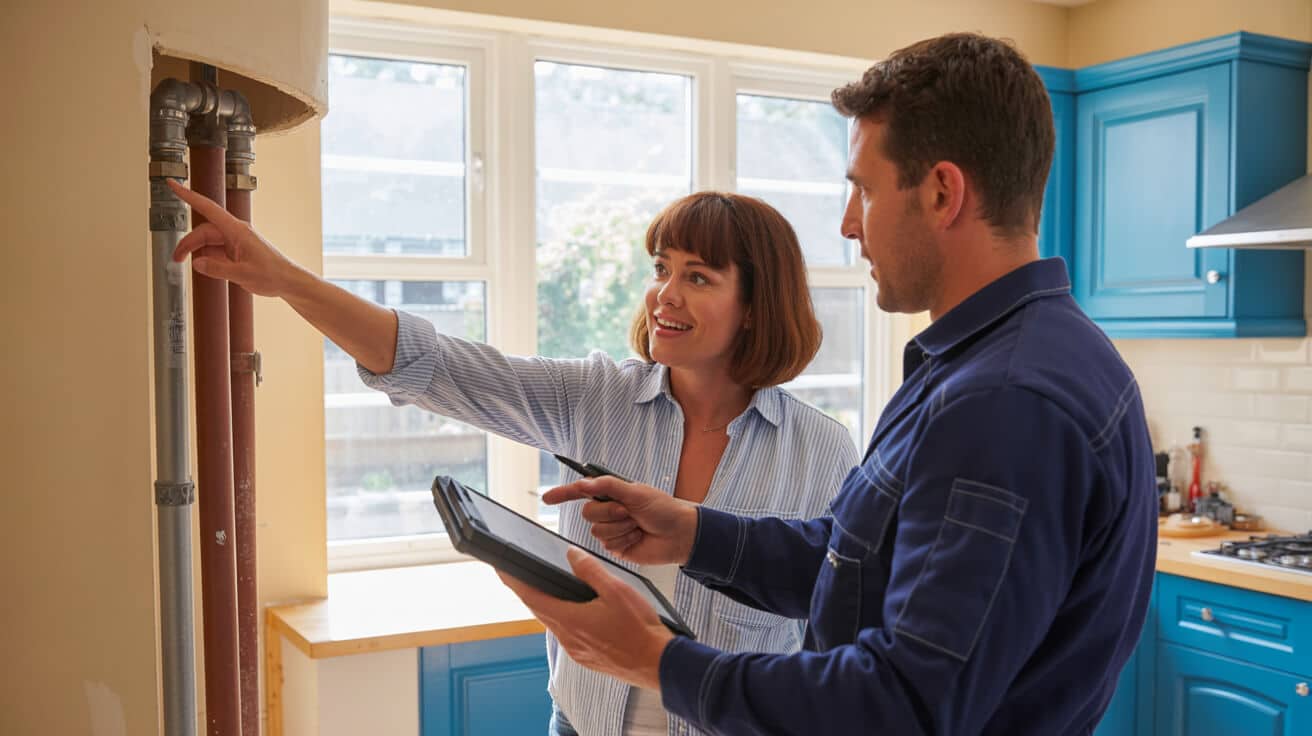
Legal compliance covers much more than ticking a box. For every surveyor, letting agent, buyer, or insurer, a bathroom upgrade only creates real value when the work is provable—on paper, with documentation, and verified by third-party inspectors.
The Stepwise Compliance Checklist
- Part G: Hot Water Safety
- Thermostatic mixing at all outlets, anti-scald, and anti-backflow certified.
- Part H: Drainage & Plumbing
- All new runs gradient-correct, vented, and tanked to resist leaks; access always provided for inspection.
- Part P: Bathroom Electrics
- Every wet-zone feed RCD protected and Part P certified, with a test certificate filed and explained to you.
- WRAS Fittings Throughout
- No shortcuts—every pipe, valve, or mixer carries WRAS approval, traceable by batch or serial.
- Documented Asset File
- All G3, WRAS, and Part P docs delivered; LABC, EPC, or CP12 if required for landlords or commercial spaces.
- Commercial and Lettings Detail
- EPC scores, compliance overlays, and repair history all filed to suit lenders, letting agents, or legal reviews.
If you ever plan to let, insure, or sell your property, evidence of compliance isn’t red tape—it’s cash in the bank and hassle saved in audits or disputes.
At Plumbers 4U, this is not “extra”—it’s core. Every certificate or compliance form is bundled into your handover, with digital backup and advice for future claims or inspections.
What Guarantees and Aftercare Should Come With a Modern Bathroom Upgrade?
Lasting value isn’t about shining tiles or trend-driven design—it’s about protection if things ever go wrong. Proper aftercare comes down to responsive support, clear labour and product warranties, and a real repair plan that moves fast should you flag any issue.
What Protection Do You Really Have?
- Labour/workmanship warranty (12–24 months): —extended with formal aftercare or annual service. Everything in writing, with who to contact and how quickly you’ll get a response.
- Product/suite guarantee (often 5–10 years): —from renowned brands, provided installation is by a WRAS/G3 certified pro and you register the warranty.
- Compliance documentation: —WRAS, Part P, and G3 records, each individually marked so if an insurer or buyer ever asks, you can prove every element’s standard.
- Access to solutions: —Clear numbers, office contacts, and a single system for troubleshooting, so you’re never bounced between office and installer.
Blocks, agents, and landlords are legally better protected by holding clean, dated records. Scheduled check-ins and proactive reminders mean your investment keeps paying you back in smooth audits, insurance calls, and even higher valuations at resale.
You’re not just buying a finish—you’re buying future certainty, peace of mind, and strength against buyer or compliance surprises.
Plumbers 4U delivers all documentation at handover—plus direct contact for site support—so your concerns are always handled, and your investment, comfort, and compliance are protected for years to come.
Book a Bathroom Renovation That’s Documented, Compliant, and Futureproof—The Plumbers 4U Standard
There is no substitute for documented skill. Plumbers 4U’s WRAS, G3, Part P, and WaterSafe-certified fitters deliver:
- Transparent line-item estimates, clear risk and cost tracking, and no “hidden” extras
- Complete compliance, with every step photo-logged and documentation filed for you—ready for any buyer, agent, or insurer
- Sequenced, client-first workflow: your property’s futureproof comfort, value, and legal standing are built in, not left to chance
- Aftercare, answers, and proactive support at every handover step
You’re not lucky to have a great bathroom. You’re backed by proof, standards, and a team that’s there for you, long after work is done.
Request your Plumbers 4U survey. Make sure your investment is built for comfort—and ready to stand up to anyone’s scrutiny for years ahead.
Frequently Asked Questions
Where do hidden risks and costs most often sabotage UK bathroom renovations?
Bathroom renovations in the UK break down most often due to what you can’t see—water-damaged structures, degraded pipes, or dangerous wiring buried in floors and walls. These hidden pitfalls end up responsible for more than half of all budget shocks and timeline slips, and they rarely show themselves before the first tiles are lifted.
Finding rot under an old bath, a micro-leak in a copper pipe behind a timber batten, or pre-1980s wiring inside boxed-out walls is far more common than most owners expect. A 2024 Homebuilding & Renovating report found that 63% of delays lasting over a week traced back to invisible water, timber, or electrical failures exposed after work started. These issues rarely measure up to the drama of online makeovers, but quietly disrupt everything from your budget to your stress level.
The thing that ruins your timeline is hardly ever a decision gone wrong—it’s always what your building hides.
How do smart renovation teams surface hidden issues before they escalate?
Real risk control starts before any demolition: moisture mapping, pressure-testing pipework, live electrical safety scans, and a hands-on check beneath appliances. Survey-grade installers now run these checks as step one. If your contractor isn’t talking about them, prompt the conversation yourself.
- Ask for photo evidence of findings, plus a transparent report with contingency line-items—not lazy roundups.
- Insist on clarity: if the survey notes “possible subfloor repairs,” every discovery gets documented before costs go up.
- Make the team log daily progress and snap images of any surprise—they should detail every risk and fix for warranty, resale, and insurance.
Plumbers 4U stands out by treating every uncovered surprise as a trust-building moment, not an upsell opportunity. Transparency logs, real-time communication, and digital reporting make disruption trackable—and far more manageable.
What hidden discoveries can stop work instantly?
Widely overlooked, discoveries like loose asbestos material, active dry rot, or old, unsafe VIR wiring trigger compulsory pauses for specialist remediation. Expect reputable firms to escalate only for true safety or compliance reasons, never as a backdoor to extra margin.
The quickest way to keep your project smooth: work only with teams that show you the hidden storey—before you become the latest case study in expensive surprises.
How do bathroom renovation quotes in the UK actually build up—and why does your final cost often exceed the original number?
The actual cost of a bathroom revamp is dictated less by brand choice or fancy tile and far more by the unseen infrastructure and regulatory upgrades that become visible once old fixtures come out. Most clients get blindsided by the first “unplanned” line item, but seasoned renovators know it’s almost always due to what’s below the surface, not late-breaking design tweaks.
Professional renovation estimates break costs into tightly defined buckets:
- Integrated labour, spanning certified plumbing, electrics, joinery, tiling, and supervision, sequenced for efficiency.
- Quality and warranty rating of fixtures—basins, WCs, brassware, and shower controls.
- Remediation or prep work, especially for subfloors, drains, or high-risk areas exposed only during strip-out.
- Compliance measures—G3, Part P, WRAS—plus documentation, site safety, and any necessary certificates.
- Waste handling, specialist disposals (like asbestos), and digital asset records.
- VAT, insurance, plus a disciplined, scenario-based “risk wallet” (not just a % fudge).
Which? data for 2023 pegged hidden repairs—timber, plumbing, electrics, or drain—at 20% of total cost increases after contracts were agreed.
What specific triggers derail even a well-planned budget?
- Unexpected “legacy” leaks, rot, mould, or illegal wiring needing major repair upfront.
- Extra upgrade requests: digital mixer showers, wall-hung loos, or underfloor heating after the initial design sign-off.
- Compliance hurdles: e.g. switching to an unvented system means mandatory G3 work, more paperwork, and tighter inspections.
Your biggest expense won’t be a ceramic sink—it’ll be the pipework or floor you couldn’t see when you signed the contract.
How can homeowners and landlords regain control over cost escalation?
- Lock in a contractor who shows you base cost, risk events, and remedial tracking—each with photo or video proof tied to signed-off extras.
- Expect real sign-off at every cost jump. If your fitter’s extras come with evidence and clear written agreement, you hold the pen on spend decisions.
- Choose a company like Plumbers 4U, which itemises risks before works start, tracks them with proof, and won’t charge a penny extra without clear consent.
Get context on standard costs, local regulatory burdens, and common overspend cases from our “Cost Triggers and Comparison” portal for your area.
Why is the final paperwork pack from your bathroom renovation so vital to resale, insurance, and long-term safety?
Quality instal goes far beyond what you can see—it’s locked into place by the compliance, background sign-offs, and digital assets you receive at handover. Weak or missing paperwork is now a leading reason for lost insurance protection, blocked property sales, and costly future rework—especially once buyers, lenders, or insurers start their due diligence.
A robust renovation folder should always include:
- Building Regulations pass papers for all plumbing (Part G), drainage (Part H), and electrics (Part P).
- WRAS certifications showing every fitting or appliance touching your water supply is legal and leak-safe.
- G3 Certificates for any unvented or pressurised hot water tanks, plus installation and commissioning records.
- Part P or NICEIC electrical sign-off (digital is fine) for any device, circuit, or upgrade.
- Product warranties and installer guarantees recorded by serial + job number.
- Digital asset file, with before/after images, circuit routes, and user manuals in one place.
- All remediation and hazard notices—especially if asbestos or rot were found and fixed—to back up insurance or prove compliance later.
A missing certificate kills deals faster than a wonky tile ever could.
What real dangers do you face if your contractor is light on compliance?
Absent or delayed paperwork can drag out sales, void insurance, or land you with regulatory penalties years down the line. Only use firms guaranteeing a zero-fuss handover file—a core part of how Plumbers 4U avoids risk. Teams that embrace “digital asset packs” keep your bathroom future-proof for every lender, insurer, or buyer who checks.
Ready-to-print checklists are available on our resources page, so you can check your own project against the most up-to-date UK standards.
How do systems upgrades truly impact property value—and what typical homeowner blunders erode return on investment?
Most buyers or tenants skim past glamour photos; real value comes from see-it-now compliance, upgraded pipework, visible isolation points, and documents any lender can instantly trust. In today’s market, installations with watertight paperwork and low-maintenance systems secure a much higher resale price and lower letting friction, outshining even the flashiest cosmetic updates.
What increases value:
- WRAS, G3, and Part P sign-offs, all scanned into a single handover folder
- Pipework with isolation points easy to demonstrate to any surveyor
- Tanking certificates and waterproofing logs—turning red flags green
- Energy-efficient fixtures and controls, with linked commissioning evidence for an improved EPC
- Direct line to registered aftercare, fully transferable for next owner or tenant
A 2022 survey by Propertymark showed “documented bathrooms” back up a 9% price boost, especially in high-demand regions. For landlords, complete paper trails speed compliance and cut the risk of claims, regulatory fines, or lost lets.
Your bathroom isn’t upgraded until a surveyor can ‘see’ every system, valve, and signature—on paper and in person.
Where do property owners throw away value after investing in a refit?
- Covering up out-of-date pipes or shoddy electrics to hide, not solve, legacy risks.
- Neglecting compliance for new equipment or skipping documentation for new cylinders, G3 hardware, smart showers, or, worse, going cash-in-hand.
- Omitting warranty, digital handover, or guaranteeing maintenance support—especially for high-efficiency or digital assets.
To keep every value trigger working for you, follow our action plan for landlords and sellers, or consult our local compliance checklist to push value higher with zero regulatory slip.
What does a best-in-class renovation team look like, and how can you keep project handovers frictionless?
Bathroom success isn’t just about expertise, it’s about the spec-driven choreography among licenced plumbers, certified electricians, meticulous tilers, joiners, and specialist support (for complex systems, asbestos, or compliance snagging). Disjointed handovers crush otherwise great projects; getting “the right person for each task” at the right stage is what delivers quality and speed.
Who belongs in the A-team:
- Plumbers with WaterSafe or WRAS credentials who isolate and verify every connection, plus photo-log every key phase
- Certified electricians (Part P/NICEIC) for new circuits, extractor upgrades, lighting, RCDs, and control instals
- Tilers who prep, tank, lay, and seal with system guarantees—saving on leaks or movement
- Joiners to refloor, reinforce, or re-box safely
- Specialists for asbestos, heating, screeds, or energy systems where the job steps outside a “single-trade” zone
Bathroom disruption happens when the next trade can’t finish what the last one started. Orchestrate, don’t improvise.
How do you prevent trade snags, sequence failures, or compliance gaps?
- Demand written schedules and handovers for each phase—firms like Plumbers 4U log every deliverable.
- Only sign off after seeing photo evidence and next-stage readiness—no leapfrogging or guessing.
- Keep communication central by using teams with a true *project manager*, not just subcontract chains.
Our “Teamwork Roadmap” spells out every step and tool, making it simple to know—and demand—who should do what, and when.
What aftercare, warranties, and ongoing support should property owners and managers expect from their bathroom upgrade firm?
The past decade has completely reframed aftercare: what matters isn’t a business card on the countertop, but structured guarantees, brand-registered equipment, and proactive reminders (digital and physical) that make it easy for you to protect your investment.
Modern aftercare essentials:
- Written labour guarantees, valid 12–24 months as industry minimum, longer for repeat or scheduled services.
- Product warranties registered with serials—ideally completed by the installer, expediting future claims.
- Direct access to the service desk—email, phone (answered by a human!), sometimes even WhatsApp or app-based ticketing.
- Permanent digital access to your handover pack (certificates, guarantees, as-built images, manuals).
- Automated or proactive service reminders—philtre care, valve checks, sealant refresh, or seasonal readiness.
Aftercare done right feels like a personal assistant: you never wonder what to do, who to call, or whether you’re still protected.
What does best-practice aftercare look like?
Plumbers 4U personally walks through the aftercare file, including who to call, how to access service, and when next checks are due. Their approach turns handover into a partnership, not just a transaction—keeping stress low and long-term protection high.
For a sample of our aftercare plan, downloadable reminders, or a chat about how these steps outperform “industry standard,” try our expanded support resources.
Upgrade satisfaction, compliance, and property value—Plumbers 4U delivers a zero-ambiguity approach: proactive risk scans, ironclad documentation, seamless team coordination, and future-proof aftercare. Renovations are built for life, not just for handover.

